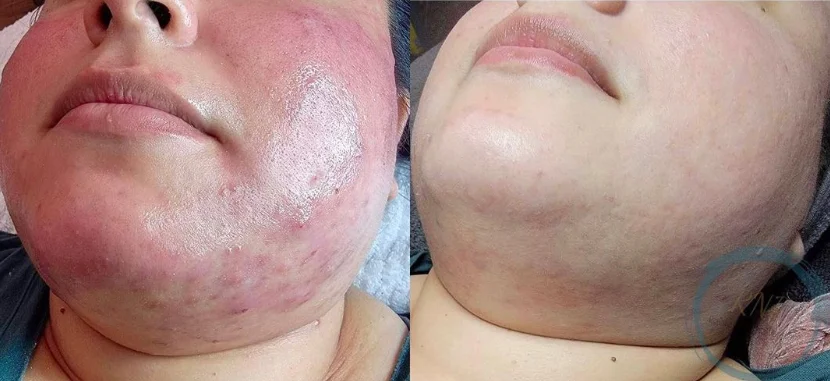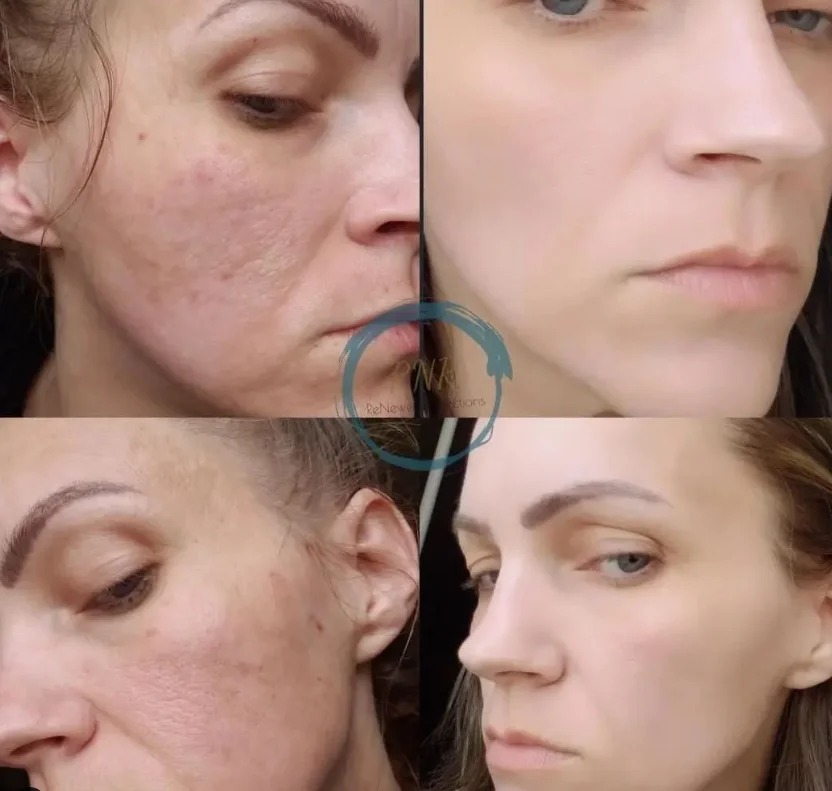Before undergoing a chemical peel, you do not want to know about “chemical peel gone wrong.” However, you must be aware of the potential causes and symptoms associated with chemical peels if you do not choose a reputable practitioner for this treatment.
Chemical Peel Gone Wrong
A chemical peel gone wrong can result in various adverse outcomes, including severe skin irritation, scarring, pigmentation changes, infection, and permanent skin damage. Multiple factors, including improper skin preparation, using the incorrect type or strength of the chemical peel, leaving the peel on for too long, or failing to care for the skin after the peel properly, can cause these complications.
If you experience discomfort or unanticipated symptoms after a chemical peel, seek medical attention immediately to prevent further skin damage.
Causes Of Chemical Peel Gone Wrong
There are several reasons why a chemical peel may go wrong. Among the most prevalent causes are:
- Incomplete Skin Preparation: Before undergoing a chemical peel, the skin must be cleansed and properly prepared. If the skin isn’t ready, it might not react well to the chemical solution, which could cause problems.
- Inappropriate Concentration of Chemicals: Peeling requires precise regulation of the chemical solution’s concentration. The skin can be severely damaged by a high enough concentration.
- Poor Method of Application: Proper technique is required for applying the chemical solution to the skin. It can harm the skin if applied unevenly or if left on for too long.
- Poor Aftercare: The proper healing of the skin after a chemical peel requires special aftercare. Complications may result if the patient does not adhere to the dermatologist’s post-peel instructions.
Symptoms of Chemical Peels Gone Wrong
Chemical peels gone wrong can cause a variety of symptoms, ranging from mild to severe. Some of the most common symptoms include:
Skin irritation
It is common to have some skin irritation after getting a chemical peel. But if the irritation is severe or lasts long, it could be a sign that something went wrong with the chemical peel.
Swelling
Chemical peels can also cause swelling, but if the swelling is severe or lasts long, it could be a sign that something is wrong. Thin, dry, or damaged skin increases the likelihood of this happening during a superficial peel, though it is more common during a medium or deep peel. It usually occurs within the first few days after treatment. While time usually does the trick in reducing swelling, ice can hasten the process.
Burning and Itching
The skin may feel painfully itchy and burn after receiving a chemical peel. But there might be a problem if the burning and itching are horrible or continue for a few days. Itching can happen after a superficial or deep chemical peel or when the skin starts to grow back. Itchy skin is a common side effect of healing, but persistent itching could indicate dermatitis or infection.

Blistering and Crusting
Some people experience blistering and crusting after getting a chemical peel. This is a sign of severe damage and must be checked immediately. Deeper peels can result in blistering. Blistering is most likely in susceptible areas like the nasolabial fold, around the mouth, and the eyes. Aside from being more common in younger people, those with saggy eyelid skin are also more likely to experience this condition. Most of the time, a blister will crust over and heal on its own, but there is a point where you should see a doctor.
Hyperpigmentation
Sometimes, chemical peels can cause the skin to become lighter or darker, which is the opposite of what is intended. A medical emergency has occurred, and the peel has gone wrong. Both hyperpigmentation and hypopigmentation can result from a chemical peel (patches of lighter skin). While deep peels are more likely to cause hypopigmentation, superficial peels are the most common cause of hyperpigmentation. These problems tend to appear on the chin and neck of people with darker skin. Most of these shifts are temporary but can become permanent if not addressed.

Treatment For Chemical Peel Gone Wrong
If a chemical peel goes wrong, seeking medical attention as soon as possible is essential. Depending on the extent of the damage, possible treatments include:
- Topical Therapies: When the condition is not severe, a doctor may recommend topical treatments like antibiotic creams or corticosteroid creams to reduce inflammation and ward off infection.
- Cool Compresses: Applying cool compresses to the injured area can help reduce pain, redness, and swelling.
- Medication for Pain: If the medical staff administers painkillers, they can alleviate the patient’s pain and help them feel better.
- Laser Treatments: When the damage caused by the chemical peel is more severe, laser skin treatments may be necessary to help repair the skin.
How Can You Avoid a Chemical Peel Gone Wrong?
The most crucial factor in guaranteeing a successful result for your chemical peel is finding a skilled practitioner. A chemical peel is a skin care treatment that deliberately destroys the outermost layer of skin, known as the epidermis, and, in some cases, the upper dermis.
Using an acid suitable for your skin type and the severity of the issue being treated typically constitutes the procedure. However, improper execution of this procedure can cause significant damage to your skin. Therefore, it is crucial to consult a trained professional who can evaluate your skin’s specific requirements and recommend the most suitable treatment.

Chemical Peel Gone Wrong – Main Takeaways
Just like any other cosmetic procedure, chemical peels come with certain risks. But these treatments are usually safe if done by a licensed dermatologist, preferably a cosmetic dermatologist. They are highly effective in reversing skin condition damage.
After treatment, you should exercise caution to avoid causing further skin damage. We recommend that you avoid picking, rubbing, or scratching the treated area. Also, be patient, as it may take several months to see the full results and benefits of the chemical peel. Remember to use SPF to protect your skin during this time.
FAQ’s
1. How To Treat Chemical Peel Burn On Face?
Rinse the skin with cool water, apply a cool compress, moisturize, wear sun protection, and refrain from picking or peeling the skin. If symptoms persist or worsen, or if signs of infection appear, seek medical attention.
2. How Long Does TCA Peel Take To Heal?
In some cases, the skin may take up to two to three weeks to heal completely after a TCA peel.
3. What Are Burn Spots After Chemical Peel Treatment, And How Do They Occur?
The term “burn spots” refers to the areas of skin damaged or burned by the chemical solution used in a chemical peel. Usually, they show up when the solution is too potent or has been left on the skin for too long. The light discoloration is the most common burn spot, but more severe burns can cause scarring or hyperpigmentation. If you’ve recently experienced a burn, it’s essential to follow a medical professional’s aftercare instructions and advice to reduce the likelihood of developing burn spots.
4. Is Skin Peel Covered By Insurance?
In most cases, insurance will not pay for a skin peel because it is purely cosmetic. However, insurance may cover skin peels if they are part of an approved treatment plan for a medical condition like acne. Before scheduling a skin peel, ask your insurance company if they cover it.
5. What are potential phenol peel complications?
Scarring, hyperpigmentation, hypopigmentation, infection, swelling, redness, pain, and problems with the heart are all things that can happen after a phenol peel.